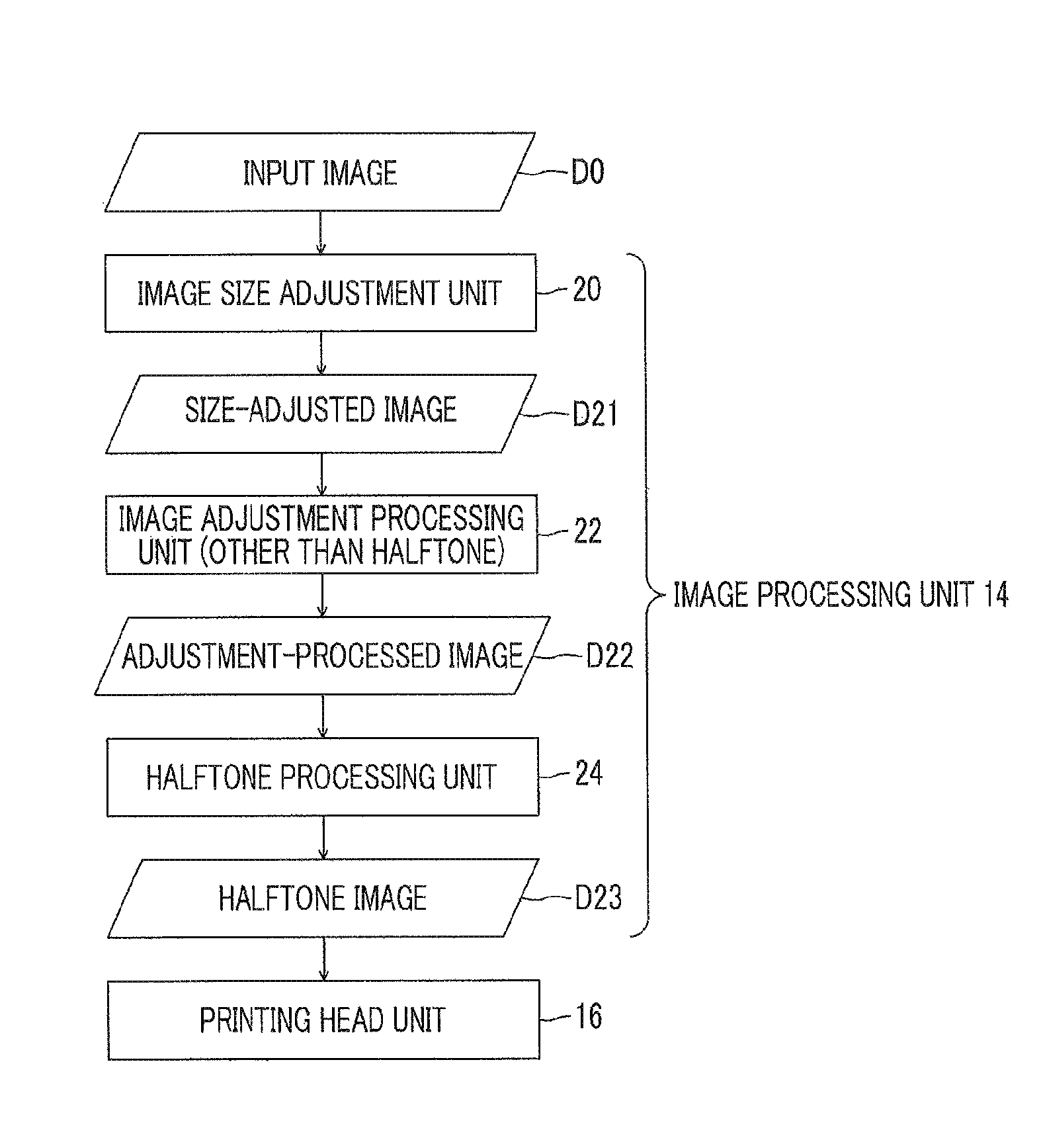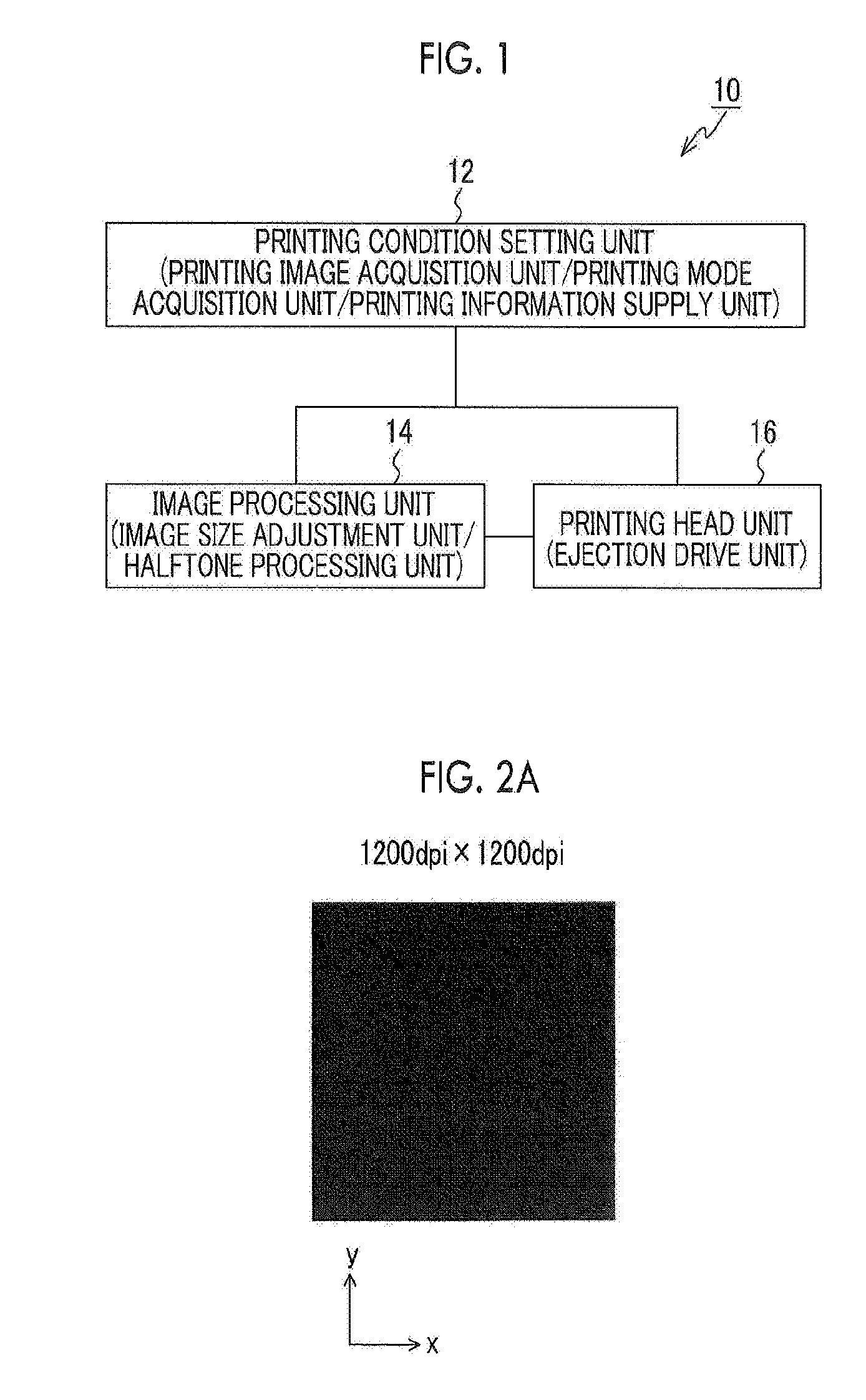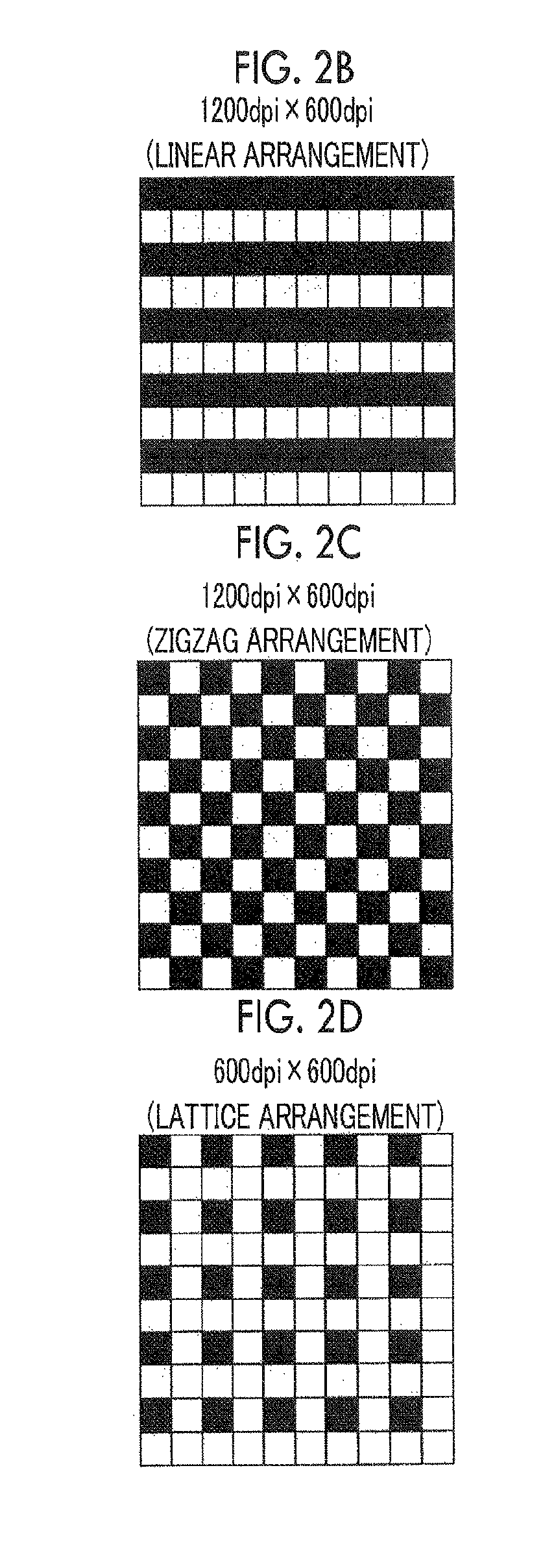Image processing device adapting halftone process to plural printing modes with different resolution and dot arrangement
a technology of image processing and printing mode, applied in the field of image processing method in the printing device, can solve the problems of increasing processing load or processing time, complex processing, and increasing software module, so as to reduce the manufacturing cost of the image processing device, effectively suppressing the increase in scale and complication of the image processing module, and simplifying the image processing module
- Summary
- Abstract
- Description
- Claims
- Application Information
AI Technical Summary
Benefits of technology
Problems solved by technology
Method used
Image
Examples
first embodiment
[0125]The halftone processing unit 24 of this embodiment performs halftone processing based on a dither matrix according to a selected printing mode based on a dither method. In this embodiment, although “a mode in which a halftone image dot is likely to be on in a pixel corresponding to a pixel of the dither matrix with a threshold element of a small value” is used, even in “a mode in which a halftone image dot is likely to be on in a pixel corresponding to a pixel of the dither matrix with a threshold element of a large value”, it is possible to perform the same halftone processing.
[0126]FIG. 6 shows an image processing flow according to a first embodiment. Respective image processing shown in FIG. 6 is primarily performed by the image processing unit 14 (see FIG. 1).
[0127]In this embodiment, similarly to the processing flow shown in FIG. 4, CMS processing (S31 of FIG. 6) and plate separation processing (S32) are performed, and image data of each process color is acquired from inp...
second embodiment
[0168]The halftone processing unit 24 of this embodiment performs halftone processing based on an error diffusion method with an error diffusion coefficient matrix as a processing parameter, and in particular, performs error diffusion processing directly reflecting dot arrangement restraints of each printing mode. The error diffusion processing is a method which performs halftone processing (multi-value processing) while diffusing an error component using the error diffusion coefficient matrix. The error diffusion coefficient matrix has a matrix structure in which an error diffusion coefficient is allocated to each pixel of “P pixels×Q pixels (x direction and y direction; “P” and “Q” are arbitrary integers)”. The value of the error diffusion coefficient allocated to each pixel is determined according to an error distribution ratio, and the error diffusion processing is performed by accumulating a product of the error component accompanied by multi-value and the error diffusion coeff...
modification examples
[0195]If image processing is made common in the printing modes, in regard to image processing of the printing modes (in particular, a printing mode with relative low density (low resolution)) made common, image processing is performed in a higher density data state, and the processing rate itself is decreased. For this reason, it is not necessary to make image processing common in all printing modes, and for example, it is preferable to provide a dedicated image processing module in a printing mode which is considered that the use frequency of the user is high.
[0196]The respective configurations and functions described above can be appropriately realized by arbitrary hardware, software, or a combination thereof. For example, the invention can be applied to a program which causes a computer to execute the above-described processing steps (processing procedures), a computer-readable recording medium (non-transitory recording medium) having the program recorded thereon, or a computer o...
PUM
 Login to View More
Login to View More Abstract
Description
Claims
Application Information
 Login to View More
Login to View More - R&D
- Intellectual Property
- Life Sciences
- Materials
- Tech Scout
- Unparalleled Data Quality
- Higher Quality Content
- 60% Fewer Hallucinations
Browse by: Latest US Patents, China's latest patents, Technical Efficacy Thesaurus, Application Domain, Technology Topic, Popular Technical Reports.
© 2025 PatSnap. All rights reserved.Legal|Privacy policy|Modern Slavery Act Transparency Statement|Sitemap|About US| Contact US: help@patsnap.com



